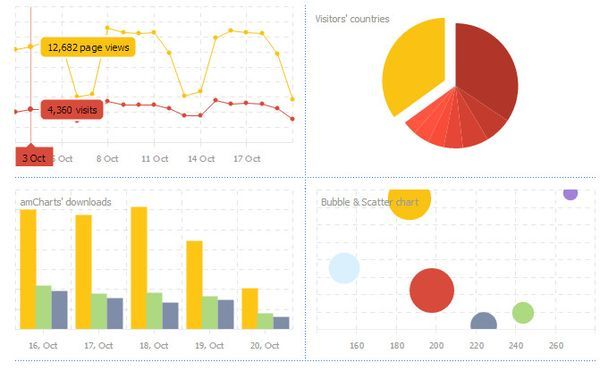Web design and print design use the same elements: space and layout, fonts and colors, and formats. An understanding of the elements that make up a good design produces a web page that works well. Design elements apply to web pages, business cards, or T-shirts and to understand them is to be a designer.
Most web pages have large amounts of text. A designer needs to think about text fonts, positions of blocks of text, and adjustments to text size and shape. Color, another important design element, enlivens web pages and dresses them up. The saying “a picture is worth 1,000 words” is certainly true in web design, making graphics for many viewers the most enjoyable parts of web pages. Layout organizes web page elements according to basic design principles, and accessibility makes the website useful to as many people as possible, so a good designer does not neglect this element.
Most web designers prefer to work in editors with visual interfaces. The best web design software, however, does more than just give you what you see, and there are other tools beyond the web editor for building web pages. Web Designers Guide:
HTML
To become a web designer, the first necessity is to learn hypertext markup language (HTML) and extensible hypertext markup language (XHTML), the basic languages for coding webpages. HTML tags all design elements with codes that instruct the web browser how to display them and tags layout and formatting information to make the web page look the way its designer intended. XHTML, named after its predecessor, is a fix for HTML limitations. XHTML mimics HTML in most ways but can be parsed by any browser interpreter into a formatted, viewable web page while only older interpreters can parse HTML.
CSS
It is also wise for the aspiring designer to learn about the cascading style sheet (CSS), a way to design a website or group of websites for consistency and easy adaptability. A designer can use a CSS file to control the look of a website by inline placement of code right into the website code line. To make a particular sentence appear in bold, blue type, CSS could set the style of the sentence to bold and blue by inline code. This method makes quick website changes easy.
Graphics
Photoshop
Photoshop® remains an industry standard in graphic editing. Dreamweaver® makes a web designer’s life simple with its code view and error-spotting capabilities. Expression Web, an HTML editor and general web design software product by Microsoft, is available as a free download. The wise designer, however, learns to do the job in not only HTML and CSS but in as many codes and programming languages as possible to be able to work with programmers most economically and efficiently.
Other Skills
Web design is a competitive field. One good way to enter it is to attend a web design school to learn design techniques, but not all schools are alike, and not all are accredited. Accreditation indicates a satisfactory rating in education quality. A good example of some of the programs studied on a standard curriculum for an accredited web design school could consist of study in:
- Management of Information Systems
- Fundamentals of Programming with Algorithms and Logic
- Image Editing and Implementation
- Introduction to Web Design
- Web Systems
See also:
Improve your Programming skill fast
Learn Programming Fast
Many accredited online universities and colleges offer degrees in web design. Their programs are sometimes better than those of the traditional brick-and-mortar schools because of the flexibility students have attending classes online. Online courses allow students to access their lectures, course materials, and classroom discussions at any time of day convenient. This flexibility is especially helpful for those with job or family responsibilities throughout the day.




